Hayward Chlorinator Troubleshooting & Repair Guide
The Hayward Chlorinator comes in an offline and an inline model. The inline chlorinator connects using PVC fitting and unions and is piped “inline” with the swimming pool plumbing. The “offline’ Hayward Chlorinator hooks up in a completely different way. This type hooks up using flexible chlorine feeder hoses with saddle connection fittings. Now that you know that there are two different styles of the chlorinators you will now have to find out what type you have before you can start working on it.
Before working on either the in ground model which is the CL220 or the above ground swimming pool model which is the CL110 you will always want to make sure you can run the pool water though the chlorinator for a few minutes. Sometimes chlorine gas can build up inside the chlorinator and when you open it, the gas could make you sick. Always be sure to stand back when removing a chlorinator lid that has chlorine tablets inside of it. Try to always run water through the chlorinator by turning the pool on first, this was NOT a typo that was said twice, Chlorine gas can be very dangerous, be careful anytime you work with any type of swimming pool chlorine or tablets.
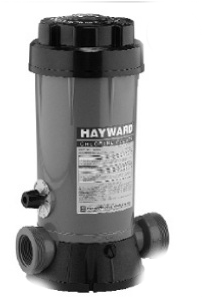
When working on the chlorinator you will want to make sure that your swimming pool filter system is shut off. You will also want to unplug t he pump cord if possible to prevent the swimming pool timer from kicking on the pool pump while you are working on rebuilding your Hayward Chlorinator.
How To Replace The Hayward CL220 & CL110 Cover O-Ring
One of the most common o-rings that will leak on both the CL220 and the CL110 Hayward Chlorinators is the top cover gasket as shown in part number 6 in the diagram. This part is called the Hayward Chlorinator Cover Replacement O-ring if you should decide to buy the part at a local pool supply store such as Leslies or even online.
The first thing you will need to is to remove the hold down screw that connects the top of the cover to the bottom disk below. You will first need to remove the cover that protects the hold down screw. This hold down cover is part #1 in the diagram. The hold down screw you will be removing is part #2 in the diagram. Once you remove the screw, which is, plastic you can remove part #5, which is the bottom, halve of the cover. You will now to be able to see the o-ring. You can now take a flat head screwdriver and pop the o-ring of the bottom part of the cover disk. Once the old o-ring is removed you can replace it with the new Chlorinator o-ring that you have purchased. You will also want to put a bit of Jack’s Pool Magic grease on the o-ring to prevent it from drying out.
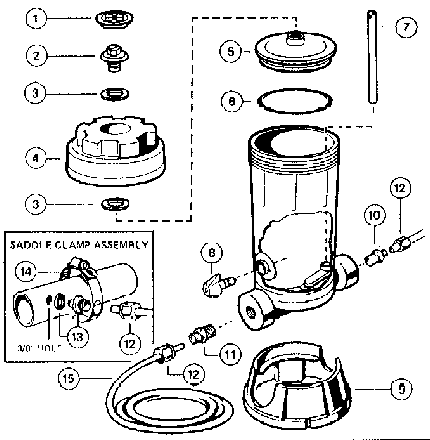
Now that the new o-ring is back on the disk you can start to put the chlorinator back together in the reverse order that was described you above. Be careful and do not over tighten the hold down screw or you could crack it. It’s only made from plastic so you need to be careful when tightening this back down.
How To Replace The Hayward CL110 Chlorine Feed Hoses
The Hayward CL110 Chlorinator is a bit different from the CL220 model. This model uses flexible black chlorine feeder hoses to connect the tank to the filter system. From time to time these lines will become brittle and need to be replaced. You can buy replacement Hayward Chlorine feeder lines online or from a local swimming pool supply store.
To replace the lines on the Hayward CL110 Chlorinator you will need to loosen the nuts at the end of each line. Turning them counter clockwise will loose these nuts, be sure to do it carefully or the chlorine feeder line nuts could break or strip out. Once the nuts are loose you can remove both the feed and return lines. The Hayward re-build kit for the Chlorinator should have new nuts and lines in the pack.
You will now want to measure the length of the lines before cutting them and it’s very important to cut them straight or they will leak. Once you have pre cut the lines you will want to slip on the new lock down nuts and screw them on to the saddle fittings that you removed them from. Make sure to hold the line in all the way as you are tightening them down to ensure a proper seal. If the lines leak after installing new ones your problem could be an end that is cut on an angle, go back and re-cut that end of the line and re-install the line and you should not have a leak.
How To Adjust The Chlorine Setting on The CL110 & CL220
On the side of the Hayward CL220 & the CL110 is an adjustment knob that has a dial setting on it. The dial setting ranges from 1 to 10. You can use this dial on the side of the chlorinator to control the amount of chlorine that goes back into your swimming pool. To increase the level of the chlorine into the pool you would want to turn the dial up towards the 10 setting. If you wanted to have the chlorine feeder feed at the lowest setting you would adjust the dial to 1. Most people keep the dial set on mid way, which is 5, until the pool is running for about 2 weeks and then fine tune it later on for the proper chlorine levels.
How To Check The Direction Of Flow On The Hayward Chlorinator
In order for the Hayward CL220 or the CL110 to work right you must have the chlorinator set and installed with the correct direction of flow. On the side of the chlorine feeder you will see an arrow that says, “flow”. This arrow needs to be pointed towards the return side of the swimming pool plumbing.
How To Drain The Hayward CL Style Chlorinator:
If you want to drain the chlorinator you will find a drain plug on the bottom. You can use a 9/16 open-end wrench to remove this drain plug. Turn the drain plug counter clockwise and then the drain plug will be able to be removed. Once you remove the drain plug all the water will properly drain from the chlorinator if it is standing in the upward position.

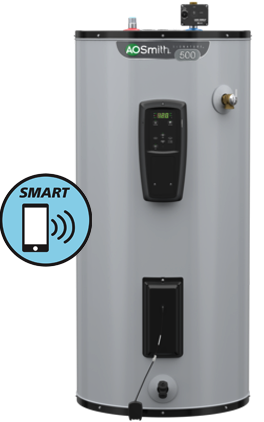
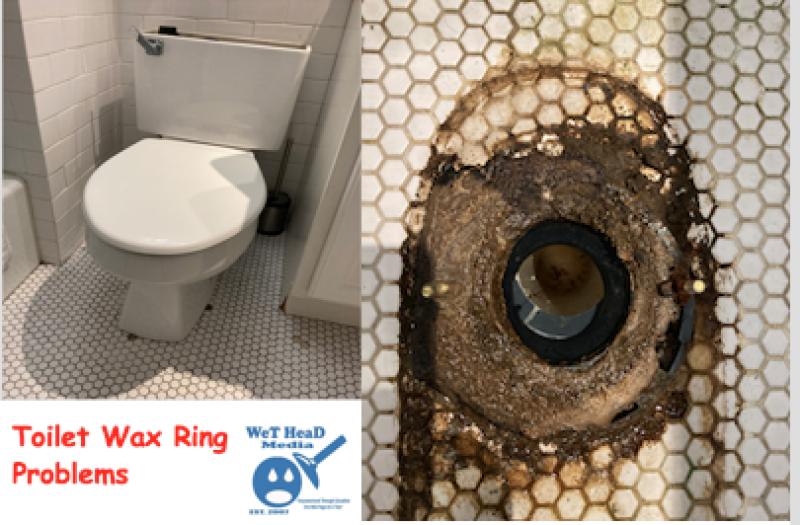
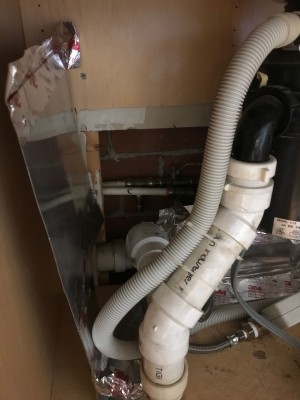
I have a Haywood CL220 series chlorinator. How do I know it’s working. My chlorine level is constantly low this year. I have the chlorinator set near high. It’s filled with tablets, and I’ve shocked my 12,000 gal pool with approx 4 lbs of shock to get things started this yr. Could the chlorinator get plugged up somewhere thats needs cleaning? Any advice?
Hi Dennis,
Most chlorine tablets are made to dissolve in 7 days, hence the name “7 day chlorine tabs”.
If you run your pool filter system for 6 – 8 hours a day by day 6 the tabs should be almost gone.
So if you are filling your chlorinator with tabs and then 5 – 6 days later you look in the chlorinator and notice that they are smaller then you will know the chlorine feeder is working.
You also mentioned your chlorine is low this year…..
Let me ask you this:
When was the last time you added stabilizer to your pool.
Is this a gunite or vinyl liner pool?
Let me know the above and I can help you further, This sounds like a Pool Water Chemistry problem more then an equipment or operator issue,
Joseph
I have a new CL220 chlorinator. The dial seems not to work. It is set to 1 and despite of that the sticks dissolved in just two days. (It was 1/3 full) The flow is going to the right direction. What might be the problem?
Hi Andy,
Even though the setting is on “1” there will still be water passing though the Chlorinator.
Are these “7 day sticks” your using or are they quick dissolve?
Could you tell me the brand name of the sticks?
Sometimes they say “7 day sticks” and do not live up to the name.
I would drop a stick in the skimmer and see how long it lasts there, if its only 2 days as well then its the sticks not the Chloirnator,
If the Chlorine Sticks last 7 days in the skimmer, then I would exchange or replace the Chlorine feeder as its probably defective or broken,
Let me know if you have any more questions.
Joseph
Thanks for your input.
I use and used to use, Mizer Aqua stabilized chlorinating sticks. I will test the sticks in skimmer once the Cl level goes down.
Now my pool is way too chlorinated.
I used Oxidizer to fix the problem. I hope it was the proper thing to do.
This is not good for the lines. Fortunately it is 10 years old and already bleached.
Hi Andy,
Thanks for the response and let me know the results after your Chlorine level goes down and after you do the test.
Your lines will be more then fine, I see no issues,
If you ever need to lower the Chlorine lower and faster, you can use something called “Dechlor” but you have to be very careful as to much will take ALL the Chlorine out of the pool.
Here is what it looks like:
I look forward to hearing your results in 7 – 10 days,
Joseph
Hello,
I have a problem similar to what Dennis described on June 24th. I have the offline Hayward clorinator that looks just like the one in the picture. I have an in-ground pool, 34K gal, with a vinyl liner. I added stabilier about 1 month ago, and the test strip shows that the stabiizer is OK.
I started to suspect that the clorinator was plugged so disconnected the flexible lines from the saddle connection fittings. I used an air pump to pump air into each end of the line into the clorinator. (THe water in the clorinator really spashed up when I did this!) It felt as if I had broke through some jamb because I felt the pressure increasing before the bubbles shot up from the clorinator, and then the pressure decreased and I could more easily pump air in. (The water in the clorinator really spashed up when I did this, so stand clear!) The next day my clorine level was up and a few days later, the tablets had disolved. However, about two weeks later the clorine level was back down so I did the same thing again.
Do you think this helped and if so, why would the jamb re -occur? Is there some maintenance I should do to clean the clorinator?
John Mc
John,
Iam having a similar problem with my CL200. After checking with Leslie Pools they sugested that I remove the unit from the line and soak it in a bucket of duluted Muratic Acid and water overnight to free up the buildup calcium over the past couple of years. That is said to clean out the clorinator free of any buildup, they also sugested to grease the top o-ring too.
Hi John,
Yes, you could do that if you have a lot of calcium build-up.
If that doesn’t work, you might want to replace it,
Joseph
This season our Hayward inline autochlorinator lid will not close to the “locking” tab. It twists till it gets extremely tight, and still needs another 1/2 turn to get to the locking tab. I remember last season it would easliy tighten down to the tab. We tried with less chlorine tablets in it, to make sure we didn’t have it overfilled and we still had the same problem. I replaced the oring to make sure it wasn’t catching anywhere, and it still gets extremely tight before the locking tab.
Hi Mike,
Have you cleaned and then lubricated the threads on the Chlorinator container?
Thats what I would suggest if you are sure the o-ring is good and positioned correctly.
Let me know if you need more help,
Joseph
I just tried something new, If i take the big silver piece out from under the lid, and screw on just the black top it goes all the way down to the locking tab. As soon as I attach that silver piece back on it gets tight a 1/2 turn before the locking tab.
Hi Mike,
What part number in the above diagram are you referring to?
Joseph
I was referring to part number 5 as the silver part. I called the company that had installed the chlorinator back in 2003 and talked to them about the situation. We had never been told how many tabs to put into the chlorinator , so we had been filling it and running the flow valve at around 2 and we were good for the summer. He said that we should have only been using 2-3 tabs per week and running the valve at 4-5, and then checking once a week to see if any needed replaced. Since we had been running so many tabs in there it was his assumption that the large amount of gasses in there for season after season it prob warped the container.
Hi Mike,
I would agree with that, The part or the container is probably warped or out of shape.
Joseph
We have a new Hayward Chlorinator for our above-ground pool. It’s time to replace the chlorine tablets, but we can’t get the cover off the chlorinator. Is there a tool we can use? Or do you have any other suggestions?
Hi Mary,
Yes, there is a tool called a Hayward Chlorinator wrench, You also can try a few other things as well.
But first…You do know there is a “push locking tab” correct? If so …read on……
1) Sometimes the system develops a “vacuum”, and just by opening the air bleeder on the top of the filter will allow air into the system and then the cover will open easier.
2) If that doesn’t work you can try a large sized pair of water pump pliers.
3) If that doesn’t work you can get the wrench that is made for tough or stubborn Chlorinators but when you use a wrench that usually means something else is wrong like a bad o-ring that is getting crimped in the threads or a container that has warped from Chlorine gas.
Let me know if you need any more help or have any other questions.
Here is a picture of that Hayward Chlorinator Cover Removal Wrench

Joseph
We finally got the cover off the chlorinator. Thanks for your suggestions. How many tablets should we put in?
Hi Mary,
I would add around 4 – 6 every 5 days or so,
Joseph
Hi Joseph,
Please explain what/ where the “push locking tab” is. Thanks!
Hi Mary,
If you look at part #4 in the diagram above that is the cover of the Chlorinator. There is a push tab on the side of the cover that needs to be pushed in before the cover will spin. Almost like a Chlorine Tab bucket or a medicine bottle.
Actually, I just made this in Photo shop to help you even more:
Let me know if that didn’t make sense or if you need more help
Joseph
Our Chlorinator (in ground, in line) has taken to not sending water through to the tablets on occasion, even with the dial set on full. I noticed above that it is not recommended to fill the chlorinator with tablets, as we had been doing. Could that have caused the problem? If so, is it possible that using less tablets at a time might help to correct this; is there a possibility that there might be some cleaning needed? Also, what is the life expectancy of the chlorinator?
Thanks,
Steve
Hi Steve,
The Chorinator could be bad, If the Chlorinator is older the 10 years I would say its time to replace it.
Filling or over filling really won’t affect what you are talking about, Just from wjhat you described I would say it might be time to replace it,
Let me know if you have any more questions.
Joseph
Hi,
I installed a New direct Chlorinator that uses 3″ tablets. My return runs very strong, but my chlorine tablets have not gone down. The arrow on the Chlorinator is pointed to the pool when installled? Any ideas?
Hi Bill,
What brand of Chlorinator do you have, Please let me know.
Joseph
Our Chlorinator is less than two years old… any other ideas?
Hi Steve,
I would replace it, Even though its only 2 years it could be bad,
Joseph
Also.
Did you save the warranty card?
Joseph